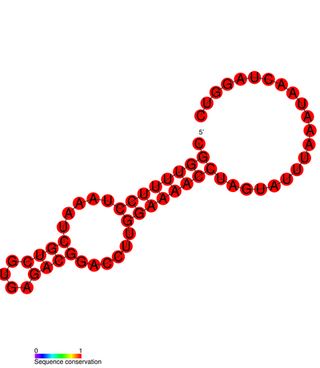
Closteroviridae is a family of viruses. Plants serve as natural hosts. There are four genera and 59 species in this family, seven of which are unassigned to a genus. Diseases associated with this family include: yellowing and necrosis, particularly affecting the phloem.
Tobravirus is a genus of viruses, in the family Virgaviridae. Plants serve as natural hosts. There are three species in this genus. Diseases associated with this genus include: SBWMV: green and yellow mosaic.

Trichovirus is a genus of viruses in the order Tymovirales, in the family Betaflexiviridae. Plants, specifically angiosperms such as pome fruits, citrus, and pear, serve as natural hosts for this plant pathogen. There are seven species in this genus.

Alphaflexiviridae is a family of viruses in the order Tymovirales. Plants and fungi serve as natural hosts. There are 65 species in this family, assigned to six genera. Diseases associated with this family include: mosaic and ringspot symptoms.

Betaflexiviridae is a family of viruses in the order Tymovirales. Plants and fungi serve as natural hosts. There are 108 species in this family, assigned to 13 genera in two subfamilies. Diseases associated with this family include mosaic and ringspot symptoms.
Gammaflexiviridae is a family of viruses in the order Tymovirales. Fungi serve as natural hosts. There is only one genus in the family, Mycoflexivirus, which has one species: Botrytis virus F.
Macluravirus is a genus of viruses, in the family Potyviridae. Plants serve as natural hosts. There are ten species in this genus.
Avenavirus is a genus of viruses, in the family Tombusviridae. Plants serve as natural hosts. There is only one species in this genus: Oat chlorotic stunt virus.
Brambyvirus is a genus of viruses, in the family Potyviridae. Plants serve as natural hosts. There is only one species in this genus: Blackberry virus Y.
Bymovirus is a genus of viruses, in the family Potyviridae. Plants serve as natural hosts. There are six species in this genus.
Capillovirus is a genus of viruses in the order Tymovirales, in the family Betaflexiviridae. Plants, pome fruits, citrus, and pear serve as natural hosts. There are four species in this genus. Diseases associated with this genus include: abnormal graft union, possibly black necrotic leaf spot disease.
Maculavirus is a genus of viruses in the order Tymovirales, in the family Tymoviridae. Plants serve as natural hosts. There is only one species in this genus: Grapevine fleck virus.
Rymovirus is a genus of viruses, in the family Potyviridae. Plants serve as natural hosts. There are three species in this genus.
Tritimovirus is a genus of viruses, in the family Potyviridae. Plants serve as natural hosts. There are six species in this genus.

Carmotetraviridae is a family of positive-strand RNA viruses. There is only one genus in this family, Alphacarmotetravirus, which has one species: Providence virus. Lepidopteran insects serve as natural hosts.
Alphanecrovirus is a genus of viruses, in the family Tombusviridae. Plants serve as natural hosts. There are four species in this genus.
Betanecrovirus is a genus of viruses, in the family Tombusviridae. Plants serve as natural hosts. There are three species in this genus.
Gallantivirus is a genus of viruses, in the family Tombusviridae. Plants serve as natural hosts. There is only one species in this genus: Galinsoga mosaic virus. Diseases associated with this genus include: chlorotic or necrotic local lesions, systemic mosaic; leaf malformation.
Macanavirus is a genus of viruses, in the family Tombusviridae. Plants serve as natural hosts. There is only one species in this genus: Furcraea necrotic streak virus. Diseases associated with this genus include: macana disease.
Poacevirus is a genus of viruses, in the family Potyviridae. Poaceae plants serve as natural hosts. There are three species in this genus.




